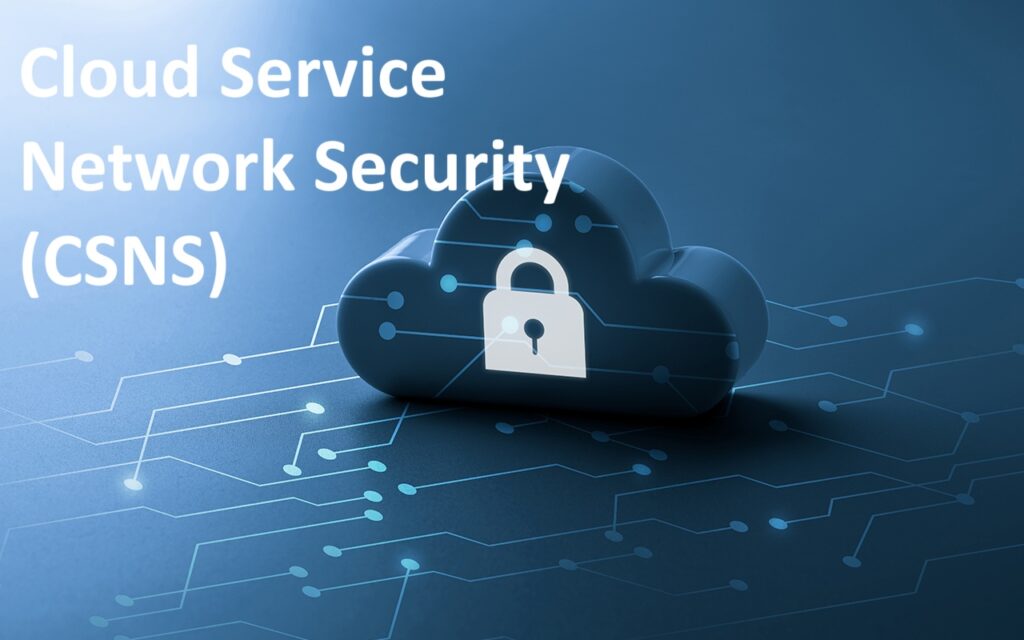
Status: Executive Brief
Author: Shahab Al Yamin Chawdhury
Organization: Principal Architect & Consultant Group
Research Date: May 2, 2023
Location: Dhaka, Bangladesh
Version: 1.0
1. The Strategic Imperative
The enterprise migration to the cloud has dissolved the traditional security perimeter, demanding a fundamental shift in security strategy. Cloud Service Network Security (CSNS) is no longer about building walls but about managing risk in a dynamic, distributed ecosystem. Effective cloud security is a foundational pillar of enterprise risk management and a critical enabler of business innovation and growth.
The market has responded to this complexity by converging siloed security tools into integrated Cloud-Native Application Protection Platforms (CNAPP). A CNAPP provides a holistic, end-to-end security framework that unifies the core pillars of cloud security into a single, cohesive solution, covering the entire lifecycle from development to production.
2. The Modern Threat Landscape
Adversaries are not targeting complex zero-day exploits but are capitalizing on failures of basic security hygiene. The most prevalent and impactful threats are rooted in common, preventable errors.
Primary Attack Vectors:
- Cloud Misconfigurations: Simple errors in configuration (e.g., public S3 buckets, unrestricted security groups) remain the leading cause of breaches. Gartner predicts 99% of cloud security failures will be customer error through 2025.
- Compromised Credentials: The theft and misuse of legitimate credentials, often via phishing, provides attackers a direct path into cloud environments, bypassing many perimeter defenses.
- Vulnerability Exploitation: Attackers are increasingly exploiting known, often old, vulnerabilities in public-facing applications for which patches have long been available.
- Insecure APIs: The proliferation of APIs has created a massive new attack surface, with vulnerabilities in authentication and authorization being prime targets.
Quantifiable Financial Impact:
- Average Breach Cost: The average total cost of a data breach reached $4.88 million in 2024.
- Cloud Prevalence: 82% of all data breaches now involve data stored in a cloud environment.
- Economic Threat: The global cost of cybercrime is projected to reach $10.5 trillion annually by 2025.
3. The CNAPP Framework: A Unified Solution
A modern security strategy requires an integrated approach. A CNAPP unifies the following core components to provide a single, prioritized view of risk.
| Component | Primary Function | Scope of Operation | Key Capabilities |
| CSNS | Protect network communications and secure data in transit. | Network Layer | DDoS Protection, WAF, NGFW, Network Segmentation, TLS Inspection. |
| CSPM | Identify and remediate misconfigurations and compliance violations. | Cloud Control Plane | Continuous Configuration Monitoring, Compliance Auditing, IaC Scanning. |
| CWPP | Secure individual workloads (VMs, containers, serverless). | Workload Layer | Vulnerability Scanning, Runtime Protection, Malware Detection. |
| CIEM | Manage identities and enforce the principle of least privilege. | Identity & Access Layer | Entitlement Discovery, Permissions Analysis, Just-in-Time (JIT) Access. |
| Table 1: The Modern Cloud Security Stack (CNAPP Components) |
4. Governance: The Shared Responsibility Model
A fundamental and often misunderstood concept in cloud governance is the shared responsibility model. The Cloud Service Provider (CSP) is responsible for the security of the cloud, while the customer is responsible for security in the cloud. Misunderstanding these lines is a primary cause of breaches.
| Security Domain | IaaS (e.g., AWS EC2) | PaaS (e.g., AWS Lambda) | SaaS (e.g., Microsoft 365) |
| Data & Access Management | Customer | Customer | Customer |
| Application Security | Customer | Customer | CSP |
| Network Controls | Shared | CSP | CSP |
| Operating System | Customer | CSP | CSP |
| Host & Physical Security | CSP | CSP | CSP |
| Table 2: The Definitive Shared Responsibility Matrix |
5. Strategic Recommendations for Enterprise Leadership
- Adopt a Platform-Centric Security Model: Strategically converge cloud security capabilities (CSPM, CWPP, CIEM, CSNS) onto a unified CNAPP. This is essential for achieving the consolidated visibility and operational efficiency required to manage security at cloud scale.
- Prioritize Automated Governance and Hygiene: Shift resources from manual auditing to the automated enforcement of security fundamentals. Implement robust CSPM, leverage Infrastructure as Code (IaC) scanning in the CI/CD pipeline, and mature the CIEM program to enforce least privilege.
- Re-architect for Zero Trust: Embrace the principle that identity is the new perimeter. Implement strong, phishing-resistant Multi-Factor Authentication (MFA) for all users and leverage microsegmentation to prevent lateral movement.
- Transform Incident Response: Modernize the Security Operations Center (SOC) for the cloud era. Invest in a cloud-native SIEM, develop and test cloud-specific IR playbooks, and upskill the IR team with expertise in cloud forensics and log analysis.
- Extend Governance to the Digital Supply Chain: Recognize that third-party risk is a primary threat vector. Implement a Cloud Access Security Broker (CASB), integrate vendor risk management into procurement, and continuously monitor third-party integrations.